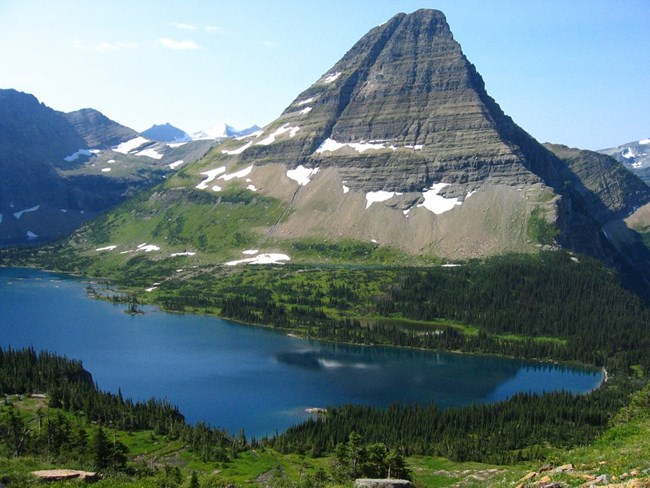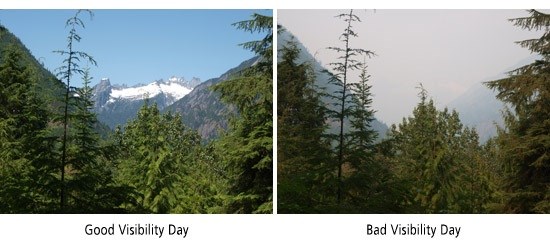Last updated: August 21, 2019
Article
What is a Clear View Worth?

NPS Photo
The pollution that affects visibility also impacts other park resources including plants, animals and entire ecosystems, as well as historic and cultural items and structures. In making policies that impact these park resources, lawmakers and stakeholders consider a variety of issues under a variety of disciplines, including economics.
While there may be many noneconomic reasons for protecting park resources, economics provides a means to compare the potential benefits of a policy with its potential costs.
Although costs of environmental regulations are generally easier to estimate and therefore often more accessible to policymakers than are benefits, economists have estimated benefits of air pollution control by looking at health problems and even deaths that scientists believe are caused by air pollution.
Lost work time and healthcare costs translate into dollar amounts. It’s been shown that people would be “willing to pay” to avoid illnesses. And, economists also have long estimated monetary worth for quality of life and life itself. Health benefits expected to result from meeting various interim goals (10 and 15 years out) of the Regional Haze Rule—which requires steady progress towards the national goal of eliminating man-made visibility impairment by 2064—are estimated to be as much as $17,726 million (1990$).

Nonetheless, for the past 25 years policy and science scholars and practitioners have conducted studies aimed at estimating the economic value of visibility in parks. Studies have found that park visitors notice haze and it detracts from their enjoyment of the park. Other studies have found that decreased visibility in national parks decreases tourism to those areas and therefore the money they bring into those economies.
In 1997 alone, the National Park Service collected $122.2 million in entrance and parking fees, and season passes. Concessionaire sales were estimated at $650 million. Travel related expenditures by visitors to National Parks generate an estimated $14.55 billion (1996$) annually in local economies. There are significant tourism dollars at stake if declining environmental conditions such as visibility keep some visitors away from parks.
The leading study on economic values of visibility in National Parks estimated that the public is willing to pay, on average, $46.31 to $76.06 (1999$) per year per household to improve visibility or to prevent it from being degraded in National Parks in the Southwest, the Southeast and California. When these values are multiplied by the number of households in the country or even in a particular region, these dollar amounts grow to the billions.
These studies, like any similar economic forecast, are based on certain assumptions and carry some amount of inherent uncertainty. The U.S. Environmental Protection Agency (EPA) with the approval of the Office of Management and Budget, however, has used these estimates in analyses of its clean air regulations. For instance, the required economic analysis of EPA’s Regional Haze Rule found that visibility benefits from meeting various interim goals (10 and 15 years out) ranged $642 million to $2,269 million (1990$).
Many potential environmental benefits of air pollution control have not been quantified. The avoidance of damage to the water, wildlife and soils of the ecosystems; the protection of cultural and historical resources; decreases of urban “brown clouds;” elimination of risks to drinking water and others all are arguably worth money to people and should ultimately be quantified for use in policy decisions that have the potential to impact these resources.
